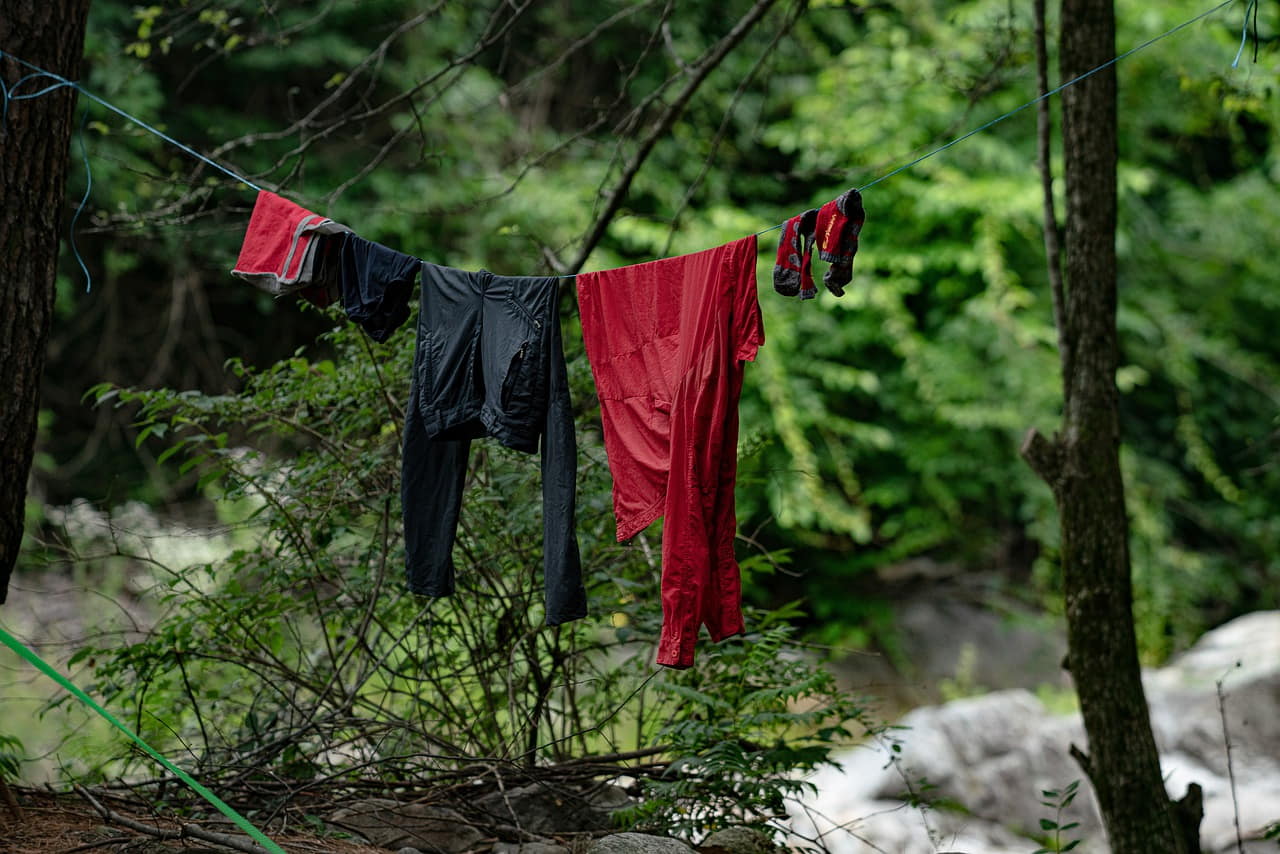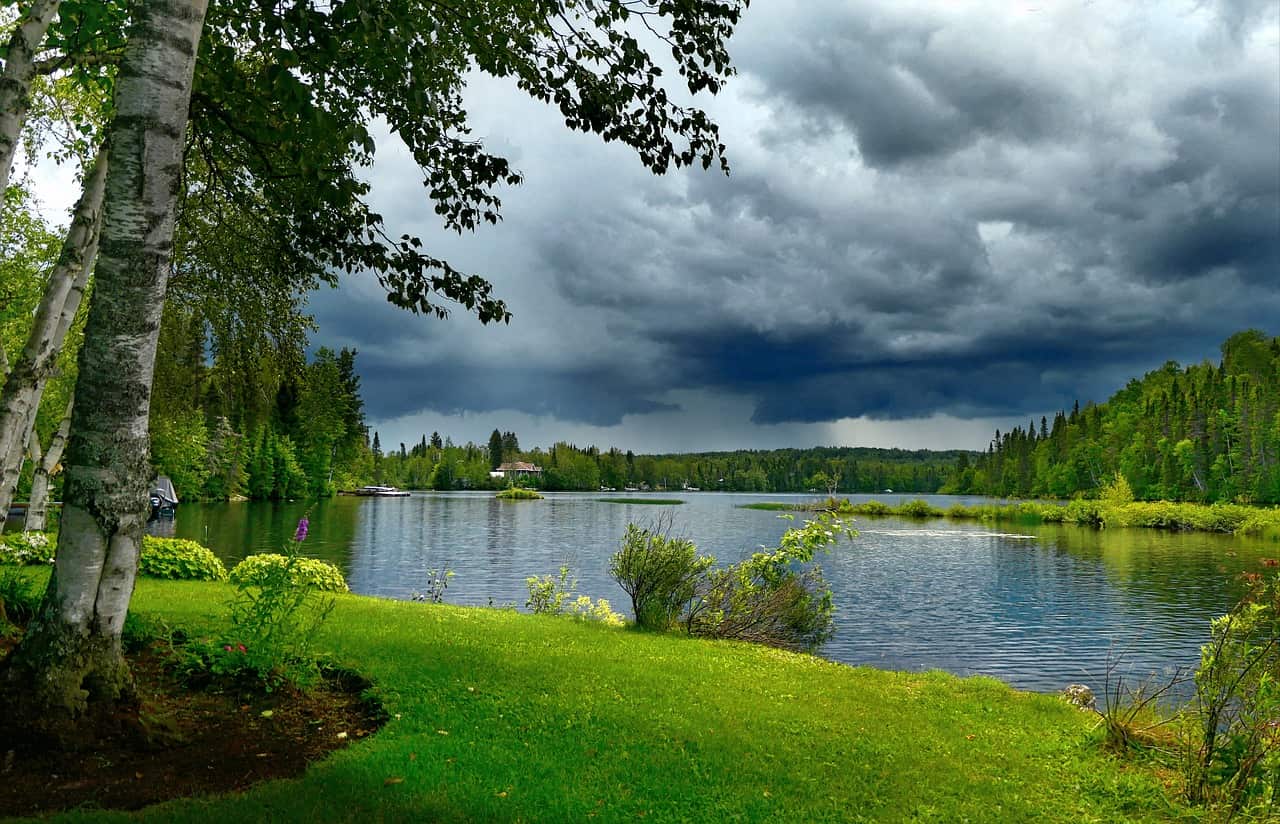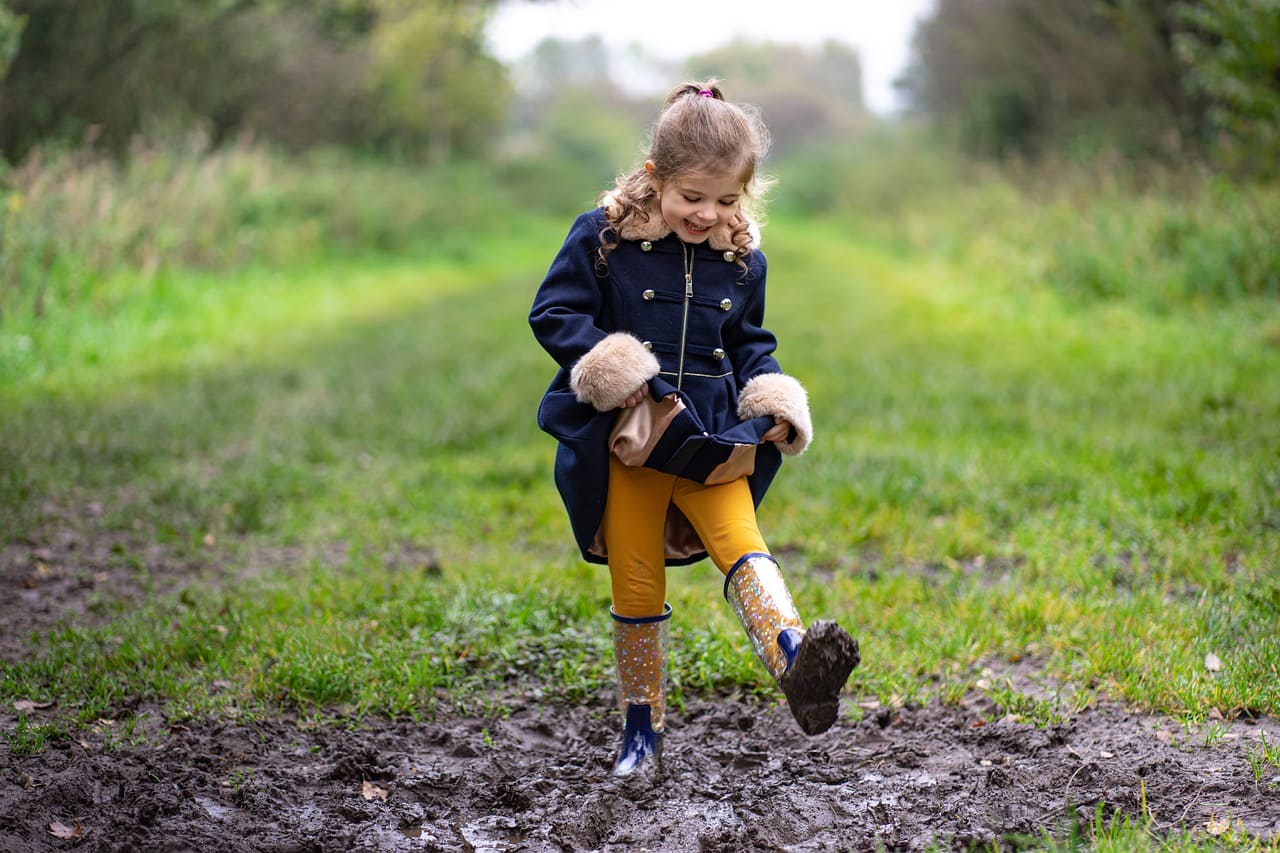Camping is everyone’s favorite pastime that can be enjoyed throughout the year. However, the weather can sometimes make camping quite challenging. For instance, how do you camp if it’s currently raining?
In this article, I will give you the best tips and guidelines on how to camp in the rain. We will look at the challenges and how to overcome them, what can be done to make this experience enjoyable, and what gear you might need to pack. Let’s begin, shall we?
A part of this article is summarized in the following video:
1. Ensure That Your Tent is Waterproof
Your tent is the center of your campsite, and it should be a safe haven against the sudden rain. Many of today’s tents are waterproof, but I would suggest you test it before heading out. Pitch it just outside your house and spray with water, testing for any leaks and drippings. If there are any indeed, use a silicone sealant to seal them. For more information on waterproof tents, you can check my article on choosing the best camping tent.
2. Bring Waterproof Clothes
Dressing correctly can make rainy weather much more bearable. Pack waterproof pants and jacket, you can wear them whenever you need to step outside the tent. If the weather is particularly cold, you can even use them as an extra layer while sleeping – as long as they are dry, of course. There are a few more tips related to choosing the right clothing, you can read them in my post on hiking and camping clothes.
3. Dress in Layers
Rainy weather is also a cold weather. Dress in several layers to keep your body dry and warm. The base and middle layers should be made of wool or polyester; these fabrics can wick moisture off your skin. Don’t wear wool because it will just stay wet and quickly make you cold. Bring extra clothes and store them inside the tent, to keep them always dry. To learn more on how you should dress during rain, please see my article on how to survive cold weather.
4. Pack Weather Appropriate Footwear
If you expect rain during your camping, it’s highly advisable to pack rain boots or shoes similar to them. Your rain footwear should be completely waterproof and easily washable, to remove mud. Try them on before leaving for camping, make sure they are watertight and warm. It’s also important that you can slip them off without any hassle before entering the tent’s sleeping area. Waterproof footwear does not have to be heavy. Today you can find quality lightweight shoes, which are listed in my article on hiking boots.
5. Keep the Sleeping Area Dry
To continue the previous tip: the inside of your tent, specifically the area where you rest and sleep, should remain dry. Leave wet clothes, shoes, and gear in the awning, or at least wipe them before bringing inside. You don’t want any muddy footprints on the floor, and you definitely don’t want anything damp on the inside, where you’re taking shelter from the wet weather.
6. Find a Safe Location for the Campsite
As you set up your campsite, there are a few things you can do to improve its location and make it safer during the rain.
- Pitch your tent away from any lake, spring, or river. You don’t want to face rising water as it flows into the tent.
- Select an elevated spot, for the same reason.
- Don’t camp under a tree, to avoid dealing with falling debris, leaves and branches, as well as heavy dripping for hours after the rain.
- Place the tent so that its opening faces the rising sun in the morning. This will make waking up and getting out much easier.

7. Hang Wet Clothes to Dry
When you get back to the tent and your clothes are wet because of the rain, your first impulse is probably to just pile them up in the corner. This would be a mistake, since damp fabrics attract mildew, and they will remain damp tomorrow. A better action would be hanging them to dry. String a clothesline in the vestibule or under a tarp, and hang your clothes for the night. On the next day, you will have something dry to wear.
8. Use More Lighting
While the dark clouds make everything gloomy, you can light the campsite up and make it more cheerful.
- Place mason jars with lit candles.
- Hang LED strings.
- Hang a big camping lantern in the center.
- Pack a few reliable camping flashlights. You can learn how to select those by reading my article on choosing the best camping flashlight.
- Pack headlamps, one for every person in your group.
- Hang reflectors, they will guide you back when you’re returning to the campsite.
9. Pack More Than Enough Batteries
Remember to pack enough batteries to last you throughout the camping trip. Flashlights, heaters, even media devices – all of them will help you through the rain, as long as they are charged. It’s advisable to get lithium batteries and not NiMh or alkaline ones. Lithium batteries last longer and weigh less in comparison to the others, while NiMh and alkaline don’t handle the cold weather that well. You can get cheap lithium batteries from Amazon.
10. Pack a Tent Heater
A high-quality tent heater is an absolute necessity when you’re camping under rainy and cold conditions. In fact, it should be your permanent camping gear, since the nights tend to be chilly even in the summer. There are several common types of tent heaters, such as a halogen heater, electric fan heater, and electric radiator. There are non-electric options available, too, like a thermal blanket and a tent-safe wood stove. To learn more, please check my article on best ways to heat a tent.
11. Wear Bright Colors
If the rain isn’t too heavy and feels more like a drizzle, you can probably try to walk around. However, if you’re wearing a dark-colored coat and it’s a hunting season, there is the unexpected danger of being mistaken for an animal. The drizzle can make the hunters’ vision blurry. Wear an orange or red parka to signal to other humans that you’re not a deer.
12. Create an Outside Resting Area
Just because it’s raining, it doesn’t mean you have to hide inside the tent all the time. You can string a tarp above you and place another one on the ground. This will create an area where you can comfortably sit on the chairs, enjoy fresh air, eat, drink, play music and games, and so on. Add some lighting to create a nice atmosphere. If you’re looking for a waterproof and easy to set up tarp, look no further than Wise Owl Outfitters. It’s lightweight yet incredibly strong and durable. You can get it from Amazon by clicking here.
13. Make Warm Food and Beverage
Get some warmth and nutrients into your tummy! Something as simple as a hot cocoa can brighten any rainy day. Tea, hot chocolate, soup – any hot beverage will improve your mood and warm you up immediately. We need to consume more calories in the cold, so that the body temperature won’t drop. Prepare your favorite meal by campfire and replenish your energies. The meal’s ingredients should be prepared at home, since it’s too challenging to peel, slice and chop during the rain. For quick and tasty camping recipes, please check my article on how to cook while camping.
14. Warm Your Clothes During the Night
Imagine waking up after a rainy night and putting cold clothes on your body. Brrr!! To avoid this unpleasant feeling, try this neat trick. Roll next day’s clothes into a mesh bag and place them inside the sleeping bag. They will share your body temperature during the night, and will be warm and cozy in the morning. You can now put them on without shivering. Now you know how to camp in the cold weather with less worries about the next day’s morning.
15. Keep Your Water Bottle Ready for Tomorrow
If the night temperatures are too low, your water bottle might freeze and become unusable the next morning. But since water freezes from the top to the bottom, simply turn your bottle upside down before going to sleep. This way, the ice will form at the bottom (which was turned up), while its opening will still be free, and you can drink from it in the morning.
16. Walk the Forest with More Care
Rain brings additional challenges to trekking through the woods. Everything is more slippery. There is new debris blocking the trails. Puddles and streams can force you take a longer route. If the outside conditions are too tough for a walk, maybe take a day off and stay at the campgrounds. Make this into a fun day, with a big meal for everyone and tons of social games.
17. Pack a Few Plastic Bags
Large plastic bags can turn into the most useful item ever, once you must deal with the rain and its outcome. They can be used in a large variety of ways, such as:
- Keeping the backpack dry
- Storing wet clothes and socks
- Storing wet equipment
- Storing dry sticks before the rain, which can be used as firewood afterwards
- Storing food
- Storing medicine
18. Use Newspaper
Just like plastic bags, a newspaper is another cheap item that helps you deal with the rain. In case you haven’t saved any kindling, you can use newspaper to start a fire. Additionally, you can stuff newspaper into the shoes to help drying them. The paper will absorb dampness quickly.
19. Add Three More Layers to the Tent
To be completely protected against the rain, there are more layers you can add when pitching the tent:
- Place a large piece of strong tarp under the tent. This will defend the tent against flooding. Make sure that the tarp does not stick from under the tent, to prevent water from accumulating on it and flowing under the tent. Fold the surplus tarp under itself until nothing sticks out.
- Place another lining inside the tent. This is your additional defense against moisture that might infiltrate the tent. You can use a big plastic sheet. Cut it slightly larger than the tent floor’s width.
- String another tarp or canopy above the tent. Give it an angle, so that the water doesn’t accumulate on it, but instead flows off and falls away from the tent. You can use this as a vestibule for the tent, where you can keep muddy shoes or even cook meals.
20. Plan Activity for the Rainy Day
As mentioned earlier, no rain should stop you from having fun. Your group can gather under a tarp or inside the tent, have a big meal, have a conversation or discussion, sing, do impressions, play cards, play charades, play chess and many other games. You can even turn your chess play into a miniature tournament, with winners advancing to meet each other in the finals. Amazon has tons of awesome board games for camping, which you can see by clicking here.
21. Dry Yourself After Getting Wet
If the rain caught you and you got soaked, you must warm and dry yourself right away! Once you’re back in the tent, you should undress to dry. Then, get into dry clothes or the sleeping bag. You can even get naked into the sleeping bag, as long as it’s warm and dry. In fact, you need to do everything possible to restore your body’s temperature: drink a hot beverage, build a fire in the vestibule, put on several layers of clothing, do some basic exercises, and so on.
22. Don’t Store the Gear if It’s Wet
Once you’re back home after the trip, wipe your gear dry before storing it. This goes double for the tent. The last thing you want to find out at the next camping trip is that there is mold all over the folded tent, because you stored it wet.
23. Consider Bringing a Hammock
If you’re on a camping trip that doesn’t demand setting up a permanent campsite, such as a kayaking trip, you can pack a hammock instead of a tent or a sleeping bag. Hammocks keep us and our stuff above the wet ground. You can hang a tarp over the hammock and hang the equipment under it. Even if the entire ground turns into mud, you will still be dry and cozy up there in the hammock. If you’re looking for a highly recommended hammock with a rain fly, carabiners, stakes, travel pillow, and more – check out Kinfayv Camping Hammock on Amazon.
24. Seek Natural Shelters
Surprised by the rain during a walk? Look for a natural shelter to wait out the storm. Look for trees with big leaves, their canopy may save you from the pouring water. Caves are a less than desirables choice. They are rare and could be occupied by angry animals, who don’t want to share their lair with others.
25. Pack Umbrellas
Yes, sometime a solution should not be too complicated and too different from what we do in our regular city lives. Umbrellas are pretty useful; you can carry them if you’re trekking under a rain in an open area. It’s tricky to use them if you’re travelling between trees, because the sharp branches might shred the umbrella’s material. You can also use an umbrella as you rush through the rain to use the restroom.
26. Stay Positive
A bad weather should not affect your mood! Rain is just another natural phenomenon; you can appreciate what it gives to the environment and enjoy the fresh smells it delivers. If it’s not too windy, you can sit near the tent’s opening, look outside and really enjoy the view. You can also enjoy the company as you all gather inside the tent or under the tarp, taking in this special moment of your life.

27. Frequently Check Forecast
You don’t actually have to be surprised by the rain. The technology advanced immensely in the recent years. Anyone with a mobile phone can check what’s the forecast for the next hours or days, and prepare accordingly. If you go online, you can see live atmospheric images of your area and estimate when a storm is about to visit the campgrounds. If the Internet is not currently available, then learn to read the weather by yourself, as I explain in my post dedicated to reading the weather for survival.
28. Bring Beach Towels
Big towels are a simple and probably the best solution. If you return to the tent completely soaked, you can wipe yourself dry with a beach towel. Pack a few of them, and hang the wet ones outside. You don’t have to buy new towels for this purpose. In fact, bring the oldest towels you have, those that you don’t mind to get muddy.
29. Get a Good Night of Sleep
Dealing with a bad weather demands a lot of energy. You need to recharge during the night, so make sure you sleep well for about 6-8 hours. If the rain sounds bother you, pack a few earplugs, enough for your entire party.
30. Learn from Your Experience
After you successfully survived camping in the rain, use this experience and knowledge when you’re preparing for the next trip. You know now exactly what you should pack to handle such weather, what activities and games you should plan to pass the hours, what food you should prepare ahead, and so forth. You are more than ready to face the next rain and still enjoy your camping trip.
In Conclusion
So there you have it, a complete guide to camping in the rain. I hope the guide was useful to you, and now you know exactly how to camp when it’s raining.
Naturally, some weather conditions require even bigger precautions. I posted a highly important guide, how to survive extreme weather. You really must read it to complete your knowledge about camping in harsh weather.
In addition, if you’re relatively new to camping, I would like to suggest checking my article on low cost camping gear. The article shows how you can enjoy this new hobby without spending too much money on it.
Happy trails, my friends!



